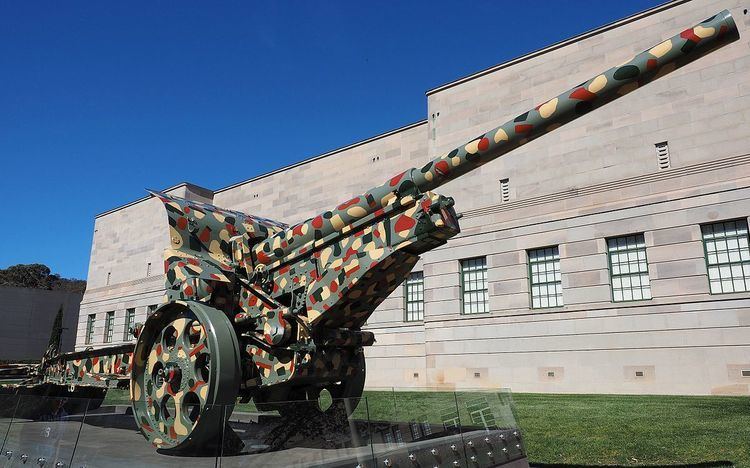Type Heavy field gun In service 1917–45 | Place of origin German Empire | |
 | ||
Used by German EmpireBelgiumNazi Germany Wars World War IWorld War II | ||
The 15 cm Kanone 16 (15 cm K 16) was a heavy field gun used by Germany in World War I and World War II. Guns turned over to Belgium as reparations after World War I were taken into Wehrmacht service after the conquest of Belgium as the 15 cm K 429(b). It generally served on coast-defense duties during World War II.
Contents
Design
The K 16 was a thoroughly conventional design for its day with a box trail, steel wheels for motor transport and a curved gunshield. The axle was suspended on a traverse leaf spring. For transport the barrel was generally detached from the recoil system and moved on its own trailer. In 1941 a small number of K 16 barrels were placed on 21 cm Mrs 18 carriages to become the 15 cm K 16 in Mrs Laf.
Ammunition
It fired 2 types of high-explosive shells, which differed only in which fuzes they could accept. It used a three part charge in its cartridge case. Charge 1 yielded a muzzle velocity of 555 metres per second (1,820 ft/s). Charge 2 replaced Charge 1 in the cartridge case and propelled the shell with a velocity of 696 metres per second (2,280 ft/s). Charge 3 was added to Charge 2 and raised the muzzle velocity to 757 metres per second (2,480 ft/s).
